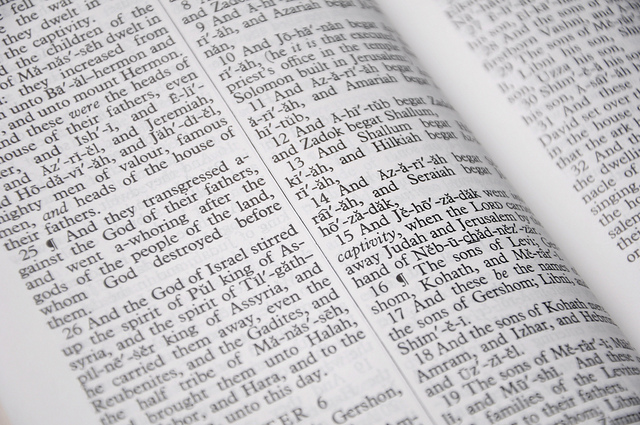
A rare copy of the King James Bible, dating back to the 17th Century, reappeared in Wales.
A moment of curiosity from St Giles Parish Church’s vicar Reverend Dr Jason Bray in Wrexham led to its rediscovery.
The National Library of Wales later confirmed its authenticity.
Dr Bray told the Daily Post that “The title page and the last page are missing but other than that it’s in good condition”.
The first edition King James Bible dates back to 1611 and is one of just 200 copies known to still exist. It is also known as the Authorised Version (AV) of the bible in English
Other English language bible translations did exist before the seventeenth century. Yet, politics often got in the way of a standardised translation.
The 1408 Constitutions of Oxford made biblical translations in England forbidden. This ban attempted to prevent a rise in English “Lutheranism”. Only the educated classes had access to the authorised translation of the bible – St Jerome’s Vulgate.
William Tyndale (1494–1536) left for Germany in 1524 hoping to translate the New Testament into English. It took two years for a complete translation to appear in England and Scotland. His first attempt failed after authorities raided his printshop in Cologne.
A group of English Catholics fled to Switzerland to avoid persecution for their faith. In 1560, they worked on what became known as the Geneva Bible. Among the translators was John Knox (1514-1572) and Myles Coverdale (1488-1569). The translators added introductions, maps, indexes, and summaries. It became the first English language bible to use roman font and introduced verse numbers. Its print run ended in 1644.
In response to perceived its ‘anti-epostical’ notes, Anglican Bishops issued their own translation. This translation became known as the Bishops’ Bible and was published in 1568 for use in the Church of England.
Yet, the Church of England, for the most, part relied upon an earlier translation, the Great Bible (1539-1540). Its initial print run began in Paris until it fell foul of Catholic censors.
Papal authority did not outlaw translations- rather they insisted that all translations get prior approval. One such approval is the Catholic Rheims-Douai Bible (1582-1610).
In 1604, King James VI of Scotland, who had ruled England for a year, ordered a new translation at the Hampton Court Conference.
More than fifty Greek and Latin scholars worked on the translation for what became the official bible of the Church of England.
If James sought unity, he had to navigate between Puritans, Presbyterians, Nonconformists and Separatists. To broaden its appeal, he ordered that scholars made the text readable in the idiom of the day.
The first prints arrived in 1611, and published in a large black font, without pictures, for use in churches.
From 1629 onwards, editors adapted its spelling and punctuation. By 1769, most of the changes were complete, but it continues to evolve. That way, a modern text differs from the 1611 version – though most changes concerned spelling.
In 1885, scholars revised the text. It brought together various denominations. This included Baptists, Methodists, and Presbyterians from Britain and the United States. This revision helped align the King James Bible with American Standard Version of 1901.
